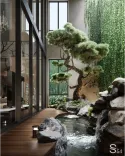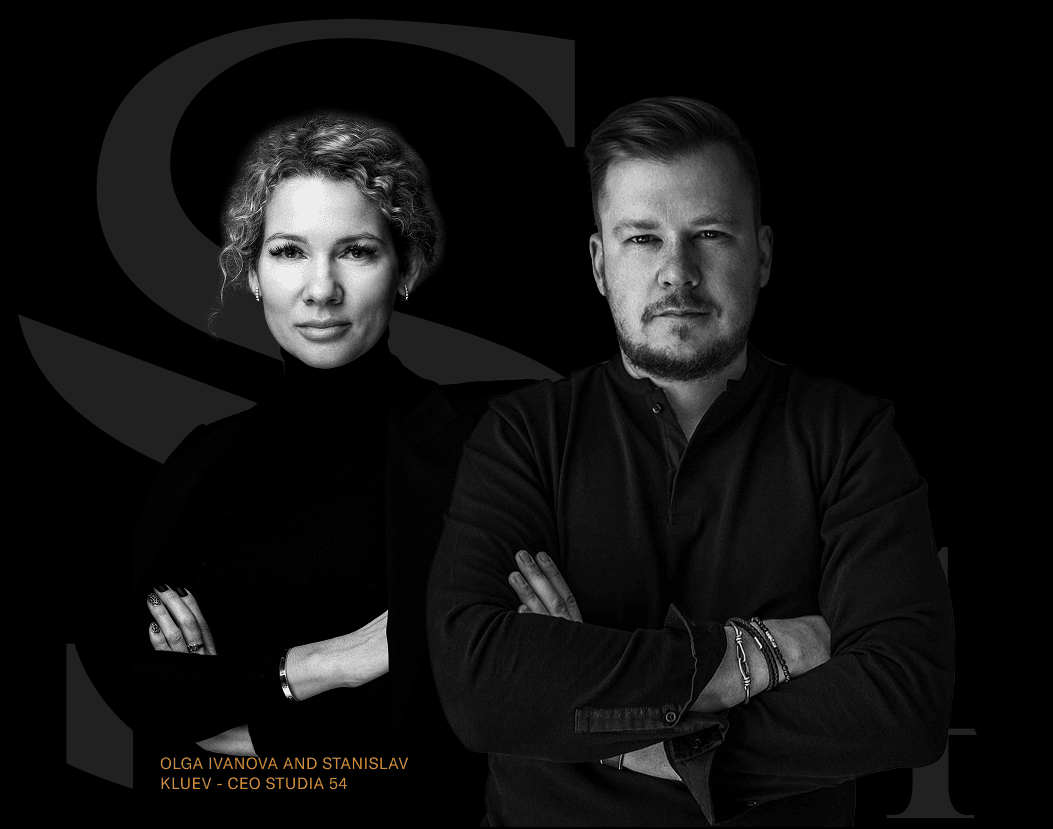/ Architecture
~ 6 min
Published: 09/10/2025
The Studia 54 team brings together world—class professionals - architects, technologists and designers, each of whom is an expert in their field. We realize the importance of integrating nature into living spaces and see this not just as a trend, but as a strategy for the future.
Our customers are increasingly turning to us with a request to create green areas, vertical gardens and enclosed indoor oases where nature becomes a part of everyday life. Despite the technological complexity of such solutions, from the selection of resistant plants to the organization of microclimate and irrigation systems, we successfully implement projects where natural greenery harmoniously combines with architecture.
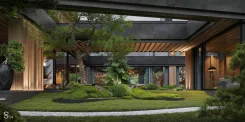
How to properly integrate nature into architecture
The introduction of green areas such as conservatories and green pockets requires careful planning and attention to many details: from glazing and ventilation to electrics, connection to smart home systems and irrigation. It is important to consider the delivery of plants and furniture, the decoration with decorative stones, the installation of paths, the preparation of drainage and the filling of the base for the winter garden.
Although such solutions involve high maintenance costs, energy consumption, and a limited service life for some systems, when implemented correctly, they transform the interior into a dynamic and harmonious environment. People begin to perceive nature not as a background, but as an organic part of their daily lives.
This is exactly the approach we implemented in one of our premium projects in Repino. The main dominant feature of the interior is the winter garden, located in the center of the ground floor. It acts as a connecting element between architecture and nature, forming a smooth transition between the exterior and interior spaces.
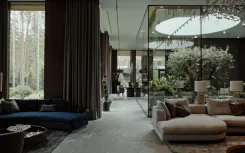
"When we set out to create a true winter garden, we had no idea what an adventure we were embarking on. The concept was ambitious — a 150-year-old olive tree, brought straight from sunny Italy, was to be planted right in the center of the house. Transporting the olive tree felt like escorting a VIP, and we meticulously prepared to ensure perfect living conditions upon its arrival. We thought of everything: automatic irrigation, climate control, humidity regulation, and careful lighting and ventilation. The only thing missing was a personal psychologist to keep it from missing Tuscany. In the end, the olive tree quickly adapted to its new home and continues to bring joy to its owners to this day," Olga Ivanova, CEO of Studia 54, recounts her experience with the project.
Integrating natural elements is shaping the homes of the future
The lack of connection with nature diminishes our ability to handle stress and maintain productivity, a fact that became particularly apparent during the pandemic, when psychological pressures rose globally.
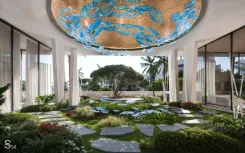
The psychological need of a person to be closer to nature is reflected in the concept of biophilia. This approach combines architecture with environmental psychology and shows how sound design strategies can enhance health and well-being, increase productivity, support biodiversity, and build environmental resilience. Moreover, such architecture demonstrates great potential in reducing energy consumption and combating climate change, becoming an important tool on the way to a sustainable future.
Thus, the key motive of our project for an elite residence in Agalarov Estate was unity with nature: surrounded by a pine forest, the house fits seamlessly into the landscape, and the interior also supports this connection through integration into the layout of the winter garden.
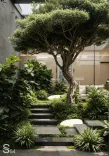
Today, there are many methods and strategies explaining how to integrate nature into architecture. These approaches distinguish different types of interaction with nature: from direct — through plants and water, to indirect — through forms, structures and textures inspired by nature. It is also important to create spaces that evoke an emotional response and a psychological sense of belonging to nature.
Given the growing interest of our customers in integrating nature into the living environment, Studia 54 was one of the first companies to introduce winter gardens into the architecture of country houses, residences, and even urban apartments in Russia. One thing is clear: the future of architecture lies in the harmonious combination of technology and natural principles.
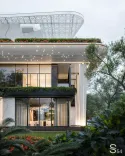
Indoor gardens as a new standard of luxury architecture
Plants are the most expressive elements of nature, and their scale directly affects the perception of architecture and interior design. They should be evaluated not only by the area they occupy, but also by height, density, and branching. Trees and large shrubs have a much stronger visual and emotional impact compared to grass or groundcover plants. They provide natural privacy and create acoustic and visual isolation that small vegetation cannot achieve.
The atmosphere of such rooms can be enhanced with carefully selected combinations — for example, combining plant compositions with landscape-inspired works of art inside a building or using natural materials and a palette of natural tones in the surrounding environment. This approach strengthens the dialogue between architecture and nature.
It was these principles that guided us when creating the architectural project of a villa in Switzerland. The customer dreamed of a private garden inside the house. For him, we have carefully designed the lighting and hiking trails in the inner garden to create a fabulous atmosphere while preserving the natural accents.
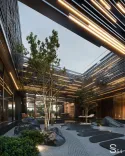
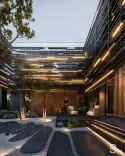
The influence of "green zones" on human psychology
Green spaces also influence how people interact with the environment. Properly designed, they can combine the openness of perspective — wide views from the upper floors — with the intimacy of the space created by the shading from tall plants. Accessibility is another important element: green areas invite direct interaction with nature, arousing curiosity, mystery and immersion.
Open courtyards and patios with greenery allow residents to physically feel the changes in the weather, and not just watch them through the windows. Seasonal changes fill the landscape with the rhythm of nature, creating a sense of constant movement and renewal.
For example, our architectural project of a designer villa in Moscow contains an ideal balance between water and "green" elements. The customers dreamed of a house where the house and landscape were created in perfect harmony. In the Japanese tradition, the garden is an integral part of the house, together they form a single space where each detail complements the other.
The courtyard is full of plants that blend seamlessly with the water elements. We added height differences to the landscape, resulting in a small waterfall that allows you to fill the garden with natural sounds of nature.
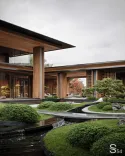
Green pockets and their advantages
Green pockets or "green pockets" are three—dimensional green spaces inside buildings that can take on a variety of shapes and configurations. The term "green pocket" itself reflects two key aspects. Firstly, these spaces occupy a 3D volume designed for intensive landscaping, including large plants and even trees. The depth and dimensions are thought out for optimal plant growth.
Secondly, these design solutions are highly flexible in location and can be integrated into different parts of the building. Unlike traditional horizontal or vertical green areas, they can occupy interior spaces and facades, creating transitional zones between natural and artificial environments.
For example, in the project of a family residence in Indonesia, a Japanese garden in a two—light space is conceived as a place for contemplation, a key practice in Zen Buddhism. The composition of the garden is based on a combination of stones, dry rivers and greenery. The waves drawn on the sand symbolize the passage of time and the continuity of life, while the motionless stones remind of stability and eternity.
The koi carp pond has become the heart of the inner garden. This is a place for leisurely walks, contemplating the smooth flow of water and watching the play of light gently descending through the branches of trees.
